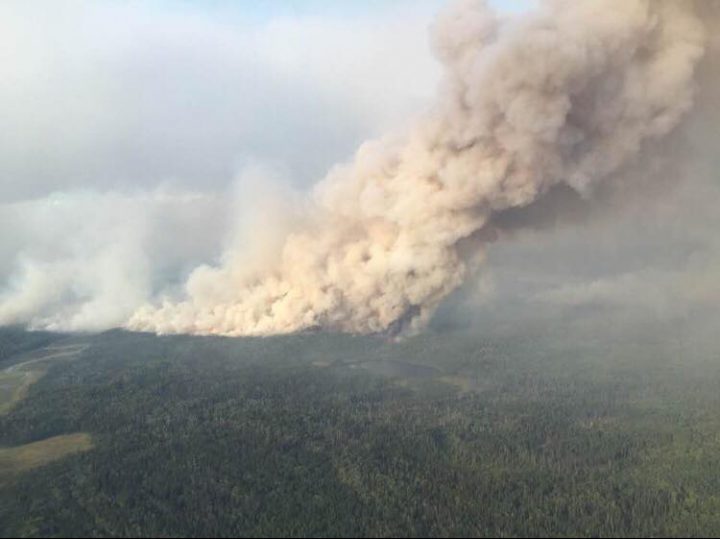A report calls for changes to Saskatchewan’s current emergency management policies for northern Indigenous communities.

The report out of the University of Saskatchewan (USask) says the provincial government can do better to support these evacuees when temporarily relocated from disasters, such as wildfire season.
“It’s looking at the experiences of this particular community, Pelican Narrows, which is a member of the Peter Ballantyne Cree Nation, (looking) at their experiences going through the whole evacuation process in 2017… It’s a little more than two weeks that they went through this process,” USask anthropology professor James Waldram said.
“We’re looking at the overall experiences of people with an eye towards understanding how we can make evacuations better… we’re working with the strengths rather than working against them. And current evacuation policy works against the strengths, in part, by disempowering the people.”
The report is called “‘Like Residential Schools All Over Again’: Experiences of Emergency Evacuation from the Assin’skowitiniwak (Rocky Cree) Community of Pelican Narrows.”
“The title of the report comes from a quote of one individual. We heard a lot of people talking about how the forced and involuntary nature of the whole rural evacuation reminded them of the residential schools,” Waldram said.
“I mean, they’re ordered to go, the police are involved and buses show up… they’re sent places they don’t necessarily know where the buses are going and they’re separated from family members.”
He said it’s key to prevent the separation of families to different evacuation centres around the province.

Get daily National news
“If someone has lung disease, for instance in a forest fire, it makes sense that they should (be moved out)… and this is what leads to the separation because then other people who are part of their family aren’t at risk, will go out in a different way and almost inevitably, that means they go someplace else,” Waldram said.
“We have situations of parents, usually their mothers with (infants)… they’ll be taken out in an early part of an evacuation. But their older children, five, six, seven, eight years old, and whatnot, will go out in a different way. And so they won’t be with their mother.
“What we’re suggesting here is change this unit of analysis for understanding risk and saying, ‘well, there may be an individual who needs to leave the community for a particular reason.’ OK. The unit of risk is the social group within which they are embedded. So they all go together.”
The director of the research program also highlighted the need for an evacuation centre to be built on a First Nation outside of the risk zone.
“We’re arguing it’s time for the government now to consider the establishment of a permanent evacuation centre for northern Indigenous people that will allow for far more culturally appropriate context for them,” Waldram said.
“Keeping them together as family units and allowing them to go to a place that is specifically set up to accommodate their particular needs as northern Indigenous people. We have evacuations every year. We don’t necessarily know which community is going to be evacuated, but we know they are going to happen and it’s only going to get worse with climate change.
Waldram said this would be a better solution rather than sending evacuees to cities.
“This is a better environment than splitting people up, sending some to Prince Albert, some to La Ronge, some to Saskatoon, sometimes even Regina in places where they’re very, very uncomfortable and making them live in very uncomfortable situations,” Waldram said.
“I think that there is a problem with racism. I think that better education is needed for host communities… (evacuees) report a great deal of discrimination and the way they’re treated.
“They’re not treated like an involuntary refugee, where the community embraces them and helps them out and whatnot and feels bad for them and whatnot. But rather, they’re treated as interlopers.”
Saskatchewan’s Ministry of Social Services said it’s reviewing the report and the recommendations.
“Through Emergency Social Services, we work in partnership with the Saskatchewan Public Safety Agency and the Canadian Red Cross to help those who have been temporarily displaced because of an emergency or disaster by providing transportation, shelter, food, personal items and counselling,” read a statement from Chad Ryan, executive director of program support with the ministry.
“We try to keep evacuees as close to their home communities as possible. We also work with community members to develop culturally-appropriate supports and activities. This includes asking the community to appoint community liaisons, who we meet with daily, to provide us guidance on community needs and supports.”
-With files from Anna McMillan







Comments